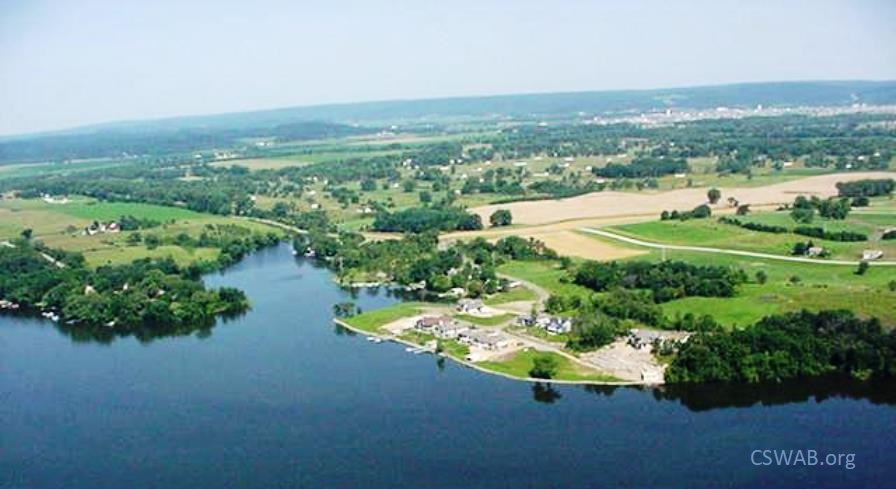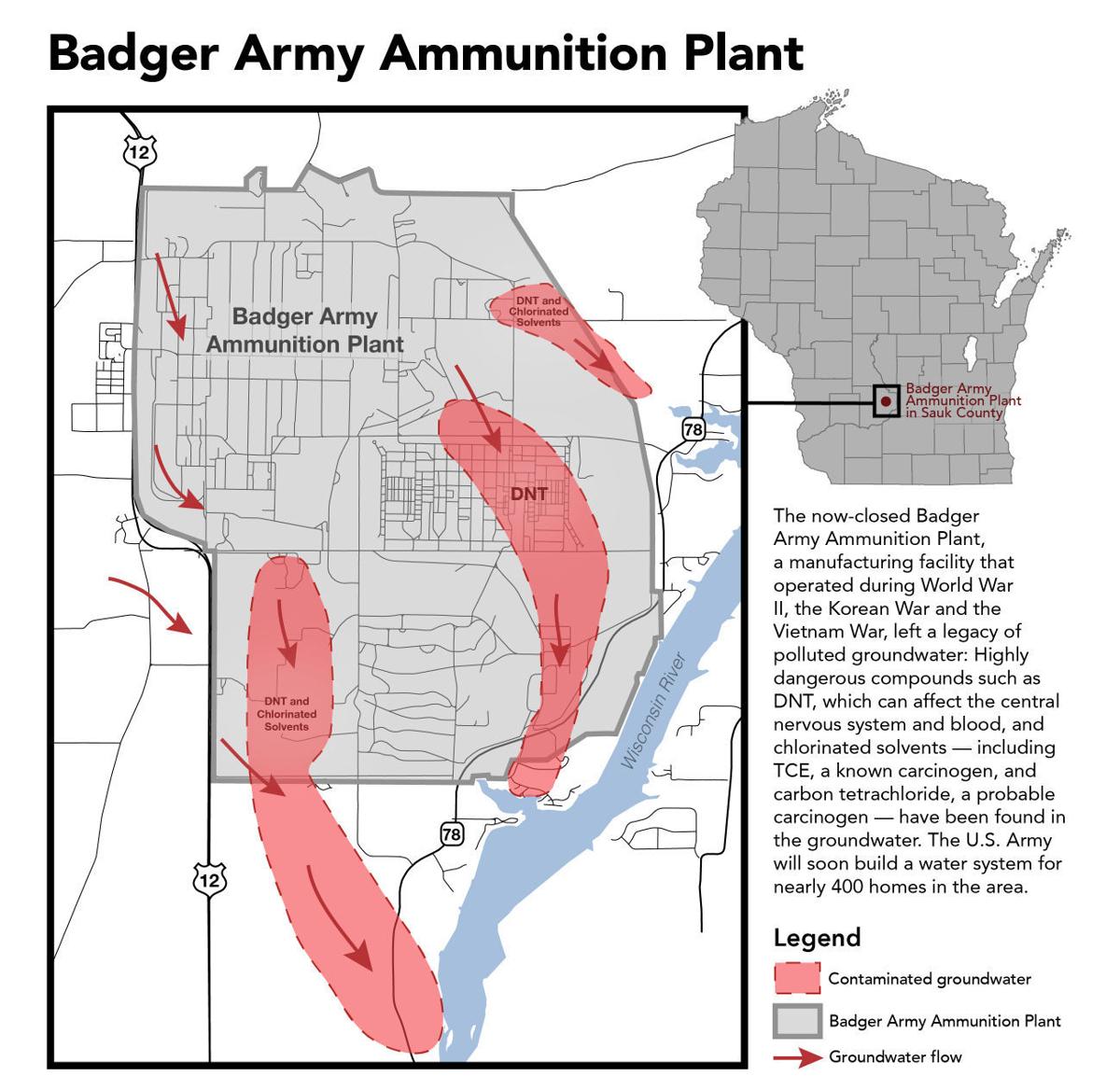
Status of Mercury Cleanup on Lake Wisconsin
Laura Olah / Citizens for Safe Water Around Badger (CSWAB)
(September 22, 2020) — During active production years (between 1942 and 1976), industrial wastewater was discharged from Badger Army Ammunition Plant through a series of settling ponds inside the plant and ultimately to Gruber’s Grove Bay on Lake Wisconsin — resulting in the contamination of lake bottom sediments.
Sediment contaminants include lead, copper, arsenic, zinc, ammonia, nitroglycerine, nitrocellulose, PCBs and methylmercury — the most toxic form of mercury. Mercury is a highly toxic element and there is no known safe level of exposure. Ideally, neither children nor adults should have any mercury in their bodies.
Due to the presence of elevated mercury and toxic metals in bay sediments and water, Gruber’s Grove Bay was added to EPA’s Impaired Waters List (Clean Water Act Section 303d) in the year 2000. Today it remains on this priority list due to the failure of past cleanup actions.
Two previous sediment cleanups have been performed at the bay. The primary goal for cleanup was to restore the health of the aquatic environment including fisheries and the vital lake-bottom (benthic) community of the bay.
In 2019, the US Geological Survey (USGS) sampled sediments at Gruber’s Grove Bay to help identify the source fingerprint of mercury in the bay and to confirm the extent of contamination.
As part of this effort, USGS tested soils in the adjacent Settling Ponds, which historically carried wastewater to the bay. USGS soil sample results for total mercury ranged from 9 to 8,243 ug/kg (=ng/g or parts per billion). These levels exceed the EPA Region 4 Ecological Soil Screening Level for total mercury for multiple receptors (including plants, soil invertebrates, mammals, and birds) of 100 ug/kg.
READ THE COMPLETE REPORTwith more maps and photos at this link.

Online PUBLIC MEETING on September 24
The Army will hold its next Badger Restoration Advisory Board (RAB) meeting as a virtual meeting on September 24, 2020 at 6 p.m. The meeting is open to the public and is being conducted virtually to maintain social distancing. The only topic on the meeting agenda is mercury contamination in soils at Badger and in sediments at Gruber’s Grove Bay.
If you are not a RAB member but would like to participate, please contact Kay Toye at 302-313-1770 or kaye.toye@envrg.com and she will provide information on how to join the teleconference.
HOW YOU CAN HELP! ACTION: Sign the petition for the SAFE cleanup of mercury in Gruber’s Grove Bay on Lake Wisconsin.
Laura Olah is the Executive Director of Citizens for Safe Water Around Badger, E12629 Weigand’s Bay South, Merrimac, WI 53561. P: 608 643 3124 | E: www.CSWAB.org, info@cswab.org, www.facebook.com/cswab.org, www.twitter.com/CSWAB
NATO Poisons Fish In Germany

A German Brown Trout caught in Spangerbach Creek downstream from Spangdahlem NATO Airbase contained a staggering 82,000 ppt of PFOS.
Pat Elder / Military Poisons
(September 12, 2020) — Throughout much of Europe, NATO military bases have used and carelessly discarded hundreds of thousands of gallons of toxic fire-fighting foams containing a variety of PFAS chemicals during routine fire-fighting exercises.
The aqueous film-forming foams (AFFF) have been in use since the early 1970’s and have been allowed to seep into the ground to contaminate groundwater, soil, and surface water. The resulting pollution is responsible for a serious European public health crisis, although few are paying attention.
A German Brown Trout caught in Spanger Bach Creek, near Spangdahlem NATO Airbase, was found to contain 82 ug/kg (micrograms per kilo of fillet) of per– and poly- fluoroalkyl substances, or PFOS. That news was published in 2015 and it barely attracted attention. 82 ug/kg is the same as 82,000 parts per trillion, (ppt). Public health scientists around the world have been warning people not to consume more than 1 ppt of the toxins daily.